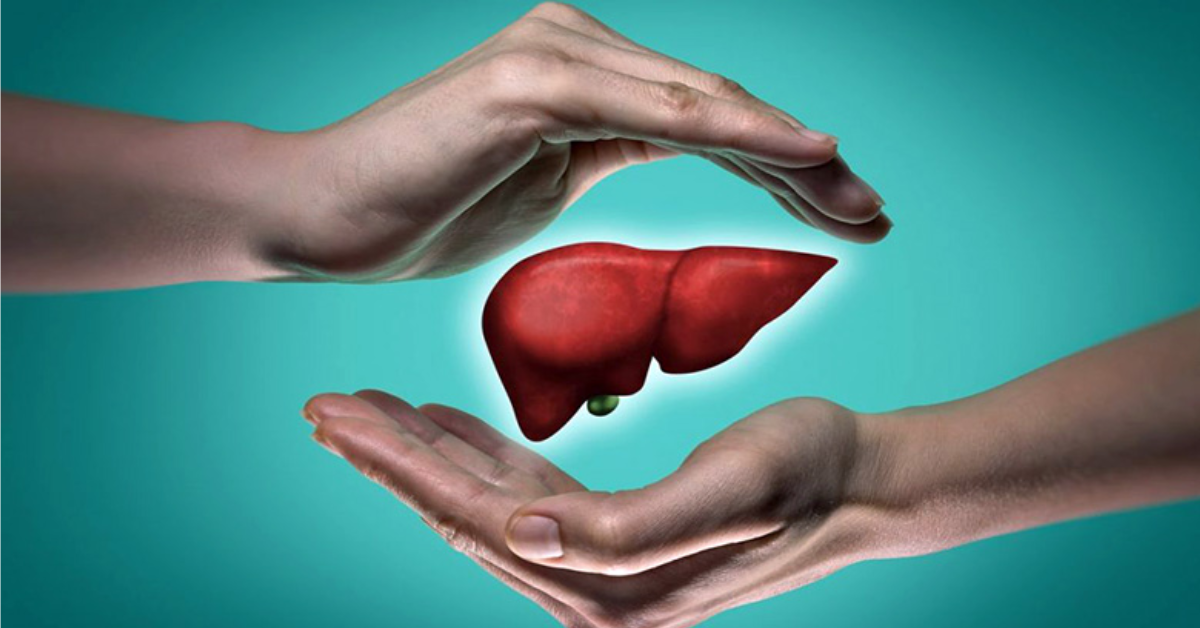Liver Cirrhosis Stem Cell Treatment in India: A Promising Alternative for Liver Regeneration
Liver Cirrhosis Stem Cell Treatment India is a serious liver condition that occurs when the liver becomes severely damaged and scarred. This scarring impairs the liver’s ability to function properly, leading to complications like liver failure, ascites (fluid accumulation in the abdomen), varices (enlarged veins), and encephalopathy (brain dysfunction due to liver failure). Common causes of cirrhosis include chronic alcohol use, viral hepatitis, autoimmune diseases, and non-alcoholic fatty liver disease (NAFLD).
In advanced stages, cirrhosis can severely limit a person’s quality of life and can even lead to death. The standard treatment options for cirrhosis, especially in its late stages, are liver transplantation or symptomatic management to ease complications. However, liver transplantation is a complex and costly procedure with long waiting lists. For many patients, Liver Cirrhosis Stem Cell Treatment in India offers a promising alternative that could potentially reverse some of the damage and improve liver function.
What is Liver Cirrhosis Stem Cell Treatment?
Stem cell therapy for liver cirrhosis involves the use of stem cells to regenerate damaged liver tissue, reduce fibrosis (scar tissue), and improve liver function. Stem cells have the unique ability to differentiate into various types of cells, including liver cells, and can help repair or replace damaged tissues.
In India, this treatment has gained considerable attention due to its affordability, accessibility, and the advanced medical facilities available. Stem cells for treating liver cirrhosis are typically sourced from the patient’s own body, minimizing the risks of rejection and complications. The treatment primarily uses mesenchymal stem cells (MSCs), which are known for their regenerative properties and ability to aid in tissue repair.
How Stem Cell Therapy Works for Liver Cirrhosis
Stem cell therapy for liver cirrhosis focuses on repairing the damage caused by scarring and inflammation in the liver. Here’s a step-by-step breakdown of how stem cells help in the treatment process:
1. Stem Cell Harvesting
The first step in stem cell therapy is harvesting the stem cells. There are two primary sources for these cells:
Bone marrow: Bone marrow is rich in mesenchymal stem cells, which can differentiate into liver cells.
Adipose tissue: Fat tissue is another rich source of mesenchymal stem cells and is often used when bone marrow is not an ideal source.
In some cases, umbilical cord-derived stem cells may also be used due to their high potency and regenerative potential.
2. Stem Cell Cultivation and Processing
Once harvested, the stem cells are carefully processed and cultivated in a laboratory to ensure they are viable and ready for infusion. This step is crucial as it ensures the stem cells can effectively repair the damaged liver tissue.
3. Stem Cell Infusion
After processing, the stem cells are infused into the patient’s body, typically via an intravenous (IV) drip. The stem cells travel through the bloodstream and reach the liver, where they begin their regenerative work. The infused stem cells repair liver tissue, reduce scarring, and improve overall liver function.
4. Tissue Regeneration and Scar Reduction
Once the stem cells reach the liver, they promote tissue regeneration by differentiating into healthy liver cells and replacing the damaged ones. Additionally, stem cells can reduce inflammation and fibrosis, two major causes of cirrhosis progression. This can significantly enhance the liver’s ability to perform essential functions like detoxification and protein synthesis.
5. Post-Treatment Monitoring
Following the infusion, the patient is carefully monitored to assess the response to the treatment. Regular blood tests and liver function tests are done to gauge improvements in liver function, reduction in scarring, and overall health.
Why Choose Liver Cirrhosis Stem Cell Treatment in India?
India has become a popular destination for patients seeking stem cell treatments for liver cirrhosis. Here are several reasons why India is an attractive option for this type of medical treatment:
1. Affordability
One of the main advantages of opting for stem cell treatment in India is the significantly lower cost compared to Western countries. While the cost of liver transplantation or advanced medical treatments can be prohibitively expensive in the U.S. or Europe, India offers affordable yet high-quality stem cell therapies. The treatment is accessible to a wider range of patients without compromising on medical standards.
2. World-Class Medical Infrastructure
India is home to several world-renowned hospitals and medical institutes specializing in regenerative medicine, including stem cell therapy for liver cirrhosis. These hospitals are equipped with state-of-the-art facilities, advanced laboratories, and the latest medical technologies that ensure the best possible outcomes for patients.
3. Experienced Medical Professionals
India has a large pool of highly skilled and experienced doctors specializing in liver diseases, hepatology, and regenerative medicine. Many of these professionals have received training from international institutions and are well-versed in advanced stem cell therapies, ensuring that patients receive the highest standard of care.
4. Minimal Invasiveness
Unlike liver transplantation, which requires major surgery, stem cell therapy for liver cirrhosis is minimally invasive. The stem cells are typically administered intravenously, which significantly reduces the risks associated with invasive procedures, such as infection or bleeding. Patients can usually return to their daily activities in a shorter time frame after the procedure.
5. High Success Rates
Stem cell therapy for liver cirrhosis has demonstrated promising success rates, especially when performed in its earlier stages. Many patients report significant improvements in liver function, reduced fibrosis, and enhanced quality of life after undergoing treatment. The regenerative properties of stem cells continue to be a subject of extensive research, and with advancements in the field, the outcomes of stem cell therapies are expected to improve further.
What to Expect During Liver Cirrhosis Stem Cell Treatment in India
The treatment process for liver cirrhosis typically involves the following steps:
Step 1: Initial Consultation
Before the treatment, patients undergo an initial consultation with a specialist in liver diseases. This consultation involves a detailed medical history, physical examination, and diagnostic tests like liver function tests, ultrasounds, and biopsies to assess the extent of liver damage and scarring.
Step 2: Stem Cell Collection
Depending on the patient’s condition, stem cells are collected either from the bone marrow, adipose tissue, or umbilical cord. The procedure for harvesting stem cells is minimally invasive and is usually performed under local anesthesia.
Step 3: Stem Cell Processing
After harvesting, the stem cells are processed and cultured in a laboratory to ensure their safety and effectiveness. This process can take a few days, depending on the type of stem cells used.
Step 4: Stem Cell Infusion
Once the stem cells are ready, they are infused into the patient’s bloodstream via an intravenous line. The stem cells circulate through the body and reach the liver, where they begin the process of regeneration.
Step 5: Recovery and Monitoring
After the treatment, patients are monitored closely to track their recovery and assess the success of the treatment. Regular follow-up visits and tests are scheduled to evaluate the patient’s liver function and overall health.
Frequently Asked Questions (FAQs)
1. Is liver cirrhosis stem cell treatment effective?
Yes, stem cell treatment for liver cirrhosis has shown promising results, particularly for patients in the early stages of cirrhosis. It helps regenerate liver cells, reduce scarring, and improve liver function.
2. How long does it take to see results from stem cell therapy?
Patients may begin noticing improvements in liver function within 3 to 6 months after the treatment. Full recovery can take up to 12 months, depending on the individual’s condition.
3. What are the risks of stem cell treatment for liver cirrhosis?
Stem cell therapy for liver cirrhosis is generally considered safe, especially when using autologous stem cells (stem cells derived from the patient’s own body). However, as with any medical procedure, there are risks such as infection, allergic reactions, or complications related to the stem cell harvesting process.
4. How much does liver cirrhosis stem cell treatment cost in India?
The cost of stem cell treatment for liver cirrhosis in India is significantly lower compared to Western countries. On average, the cost is about one-tenth of what it would cost in the U.S. or Europe, making it an affordable option for many patients.
5. Can stem cell therapy cure liver cirrhosis completely?
Stem cell therapy can significantly improve liver function, reduce scarring, and slow the progression of liver cirrhosis. However, it may not completely cure the disease, especially in advanced stages. It offers a potential alternative to liver transplantation for many patients.
Conclusion: A Revolutionary Option for Liver Cirrhosis
Liver cirrhosis stem cell treatment in India offers an exciting and effective alternative for patients who are not candidates for liver transplantation or those who seek a less invasive treatment option. With its ability to regenerate liver tissue, reduce fibrosis, and improve liver function, stem cell therapy holds the potential to change the lives of countless individuals suffering from this debilitating disease.
If you or a loved one is struggling with liver cirrhosis, Liver Cirrhosis Stem Cell Treatment in India could provide the hope and healing you need to regain your health and quality of life.







